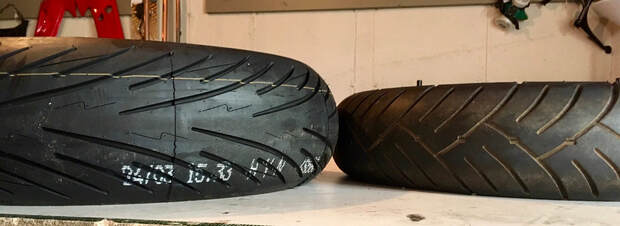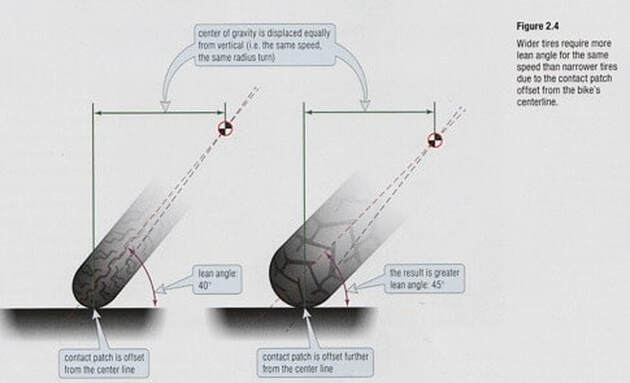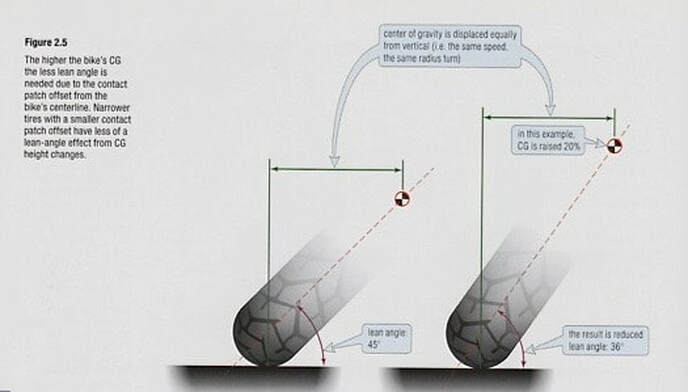But wait...it's not all bad news for the old bias-ply, and for the sport bike crowd it centers around the concept of "handling." That all-encompassing word has a whole boatload of variables, but tires are a big one. When you ride an RC24/26 ("skinny" tired) beside a later model ("fat" tired) what becomes noticeable is something called "turn-in." The older bike seems a little lighter on its feet...but the bike's not physically lighter. This is due to two forces of physics. One is that, other factors being similar, a narrower tire has less rotating mass (think gyroscope) and so can change direction more easily (this was also the thinking behind the popular use of a 16-inch front wheel back in the day).
The other is a combination of the contact patch's offset from the bike's centerline (when leaned) and its resulting effect on the bike's center of gravity. The net effect is that a narrower tire can take the same turn at the same speed, but at less lean angle compared to a wider tire. For us mortal street riders, it provides a much appreciated benefit — we don't have to lean as far (for a given speed) on our skinny tired machines, giving an extra margin of safety.
An interesting historical fact: The hallowed RC30 spec'd a bias-ply/radial combination during its production — the front a Bridgestone Excedra 120/70 17, the rear a Bridgstone Cyrox 170/60 R18. While such a mix is generally considered sinful, the engineers must have had their reasons.
I like radial tires as much as anyone, but don't feel sorry for us RC24/26 riders. Our bikes' handling mirror their look; light and athletic.
The illustrations below help to illustrate the forces at work here.
(source: Total Control, by Lee Parks)



 RSS Feed
RSS Feed